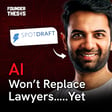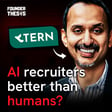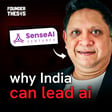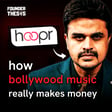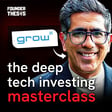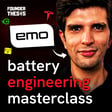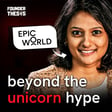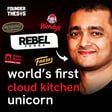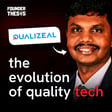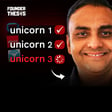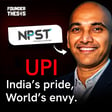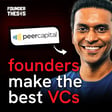
How We Bounced Back from Near Collapse to ₹121 Cr in Revenue | Rashmi Daga (FreshMenu)
"In India, ideas are everywhere, but you get rewarded for execution."
This was the core conviction that led Rashmi Daga to build a full-stack food brand, taking on the immense operational challenges of controlling everything from the kitchen to the customer's doorstep—a bet against the asset-light models that dominated the startup world.
About The Guest
Rashmi Daga is the founder of FreshMenu , the pioneering food-tech brand that helped define the cloud kitchen model in India. An alumna of the prestigious IIM-Ahmedabad , she led FreshMenu through a period of meteoric growth, scaling to over ₹122 crores in revenue and clocking up to 20,000 orders a day. After navigating a near-fatal funding crisis that saw revenues plummet by over 60% , she orchestrated a gritty comeback, returning the company to ₹121 Cr in revenue and a clear path to profitability.
In this candid conversation with host Akshay Datt, Rashmi unpacks the invaluable lessons learned from her journey of resilience, execution, and brand-building.
Key Insights from the Conversation:
- Full-Stack Conviction: Rashmi deliberately chose an operationally-heavy, full-stack model to control the end-to-end customer experience and long-term margins, believing execution is the ultimate differentiator in the Indian market.
- The Aggregator's Dilemma: For survival, FreshMenu was forced to pivot from a direct-to-consumer brand to listing on platforms like Swiggy and Zomato, sacrificing significant margins in exchange for visibility in a hyper-competitive market.
- Resilience & The Comeback: After a funding freeze brought the company to the brink of collapse, a focus on fundamentals—menu re-engineering, supply chain optimization, and improved unit economics—powered a remarkable revival.
- Data-Driven Innovation: From its early days, FreshMenu leveraged data to power a constantly rotating menu, track customer preferences, and minimize food waste, which was a key driver of operational efficiency.
Chapters
(00:00) Introduction
(01:22) The "No Repeat" Career: Building Skills Across IBM, J&J, and TutorVista
(10:06) My First "Practice Run": Invaluable Lessons from a Failed Startup (Afday.com)
(17:21) The Founding Thesis: Why FreshMenu Chose a Full-Stack Model Over Aggregation
(22:07) Zero to One: How to Hire Your First Chef and Acquire Early Customers
(26:05) The Brutal Food-Tech Wars: Navigating Hyper-Growth and a Near-Death Experience
(32:52) Data-Driven Menu: The Secret Behind FreshMenu's Constant Innovation
(41:45) A Founder's Hardest Job: Tough Lessons in Hiring, Firing & Setting Culture
(52:04) The Great Reset: How a Crisis Led to a Stronger, More Resilient Business
(58:45) The Road Ahead: FreshMenu's Playbook for 10x Growth and Profitability
Hashtags
#FounderThesis #StartupPodcast #RashmiDaga #FreshMenu #Entrepreneurship #StartupIndia #BusinessPodcast #CloudKitchen #FoodTech #AkshayDatt #FounderStory #VentureCapital #WomenInBusiness #StartupLessons #IIMAhmedabad

